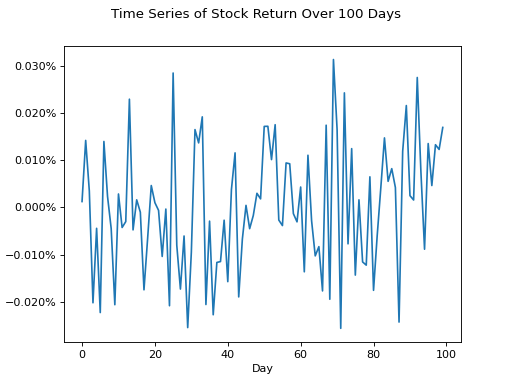Introduction#
Up to now we have been dealing with univariate data. In this section, we begin the study of bivariate data.
Definitions#
Bivariate Data#

When two variables are measured on one individual, we call such data bivariate.
The  variable is sometimes called the independent or predictor variable. The
variable is sometimes called the independent or predictor variable. The  variable is sometimes called the dependent or response variable. It is important to understand this terminology is only used in the context of the Linear Regression model introduced in the next section. Before the statistical significance of the relationship is established, this terminology is misleading, as it implies a relationship between the
variable is sometimes called the dependent or response variable. It is important to understand this terminology is only used in the context of the Linear Regression model introduced in the next section. Before the statistical significance of the relationship is established, this terminology is misleading, as it implies a relationship between the  and y variable when none may exist. Correlation can be measured between variables that have no relationship whatsoever; in such instance we call the variables uncorrelated.
and y variable when none may exist. Correlation can be measured between variables that have no relationship whatsoever; in such instance we call the variables uncorrelated.
Important
Because we are dealing with randomness, uncorrelated variables will not necessarily have a correlation of 0. In fact, correlations of 0 are never observed in practice. There will always be a non-zero correlation between any given variables; the task of statistics is to determine whether or not this correlation is significant enough to use the outcome of one variable to make predictions about the outcome of the other variable.
Scatter Plots#
A scatterplot is a very simple and easy to understand graphical representation of bivariate data. The  variable is plotted on the horizontal axis versus the
variable is plotted on the horizontal axis versus the  variable on the vertical axis. Graphs of scatterplots are classified based on the direction of the relationship observed, the strength of the relationship observed and the linearity of the relationship observed.
variable on the vertical axis. Graphs of scatterplots are classified based on the direction of the relationship observed, the strength of the relationship observed and the linearity of the relationship observed.
Direction#
No Correlation#
A scatterplot with no correlation between the  and
and  variables should appear random,
variables should appear random,
(Source code, png, hires.png, pdf)
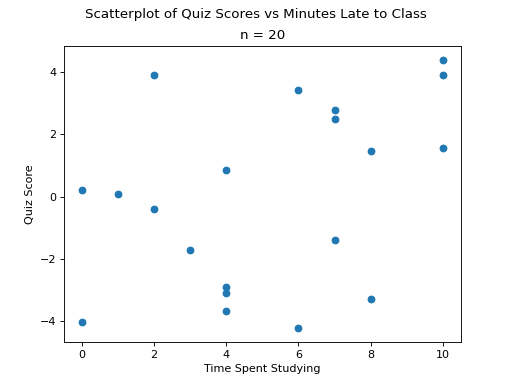
Positive Correlation#
A scatterplot with a positive correlation betwen the  and
and  variables should have a general upward trend,
variables should have a general upward trend,
(Source code, png, hires.png, pdf)
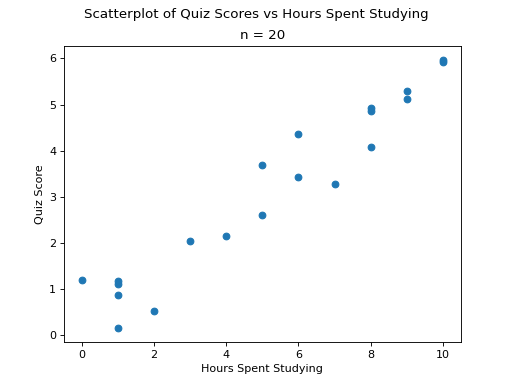
Negative Correlation#
(Source code, png, hires.png, pdf)
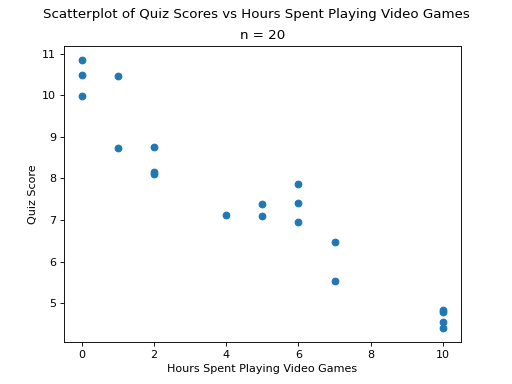
Strength#
Strong#
TODO
Weak#
TODO
Linearity#
Linear#
TODO
Non-Linear#
TODO
Time Series#
A time series is similar to a scatter plot in almost all ways, except the independent variable in a time series is always a unit of time. A correlation for a time series is called a trend.
Positive Trend#
(Source code, png, hires.png, pdf)
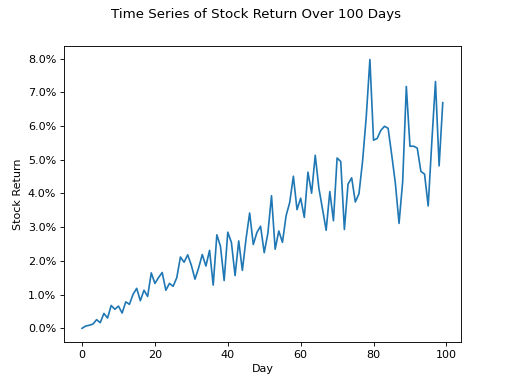
Negative Trend#
(Source code, png, hires.png, pdf)
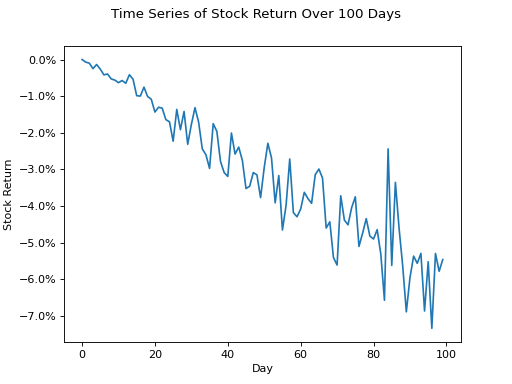
No Trend#
(Source code, png, hires.png, pdf)
